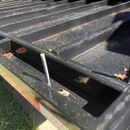Tiny Home Subfloor Flashing: Seal or Not?
I’d appreciate any advice on whether to seal the metal flashing under our Tiny Home trailer.
We’re building on a custom 14X8 ft trailer with flush cross members and metal flashing already underneath. The flashing is welded such that there are gaps.
As we get ready to insulate the around the cross members (we’re using UltraTouch Denim), I’m wondering if we should first seal around the flashing. I’ve gotten mixed advice on this: Some say it’s good to leave the flashing unsealed in case you ever get water in the cavity from above (though not sure how that would happen). Other builders have said to seal it so moisture doesn’t come up from underneath (in heavy rain).
Related, I get conflicting advice on whether to add a vapor barrier on top of the denim insulation.
What’s your thinking? Thanks.
GBA Detail Library
A collection of one thousand construction details organized by climate and house part










Replies
Jeff, it's hard to give effective advice for tiny homes on wheels because they are so different in many ways from conventional construction. In permanent homes, it's good to assume that water will eventually find its way inside assemblies, and to plan what happens if that occurs. In a THOW if you are hauling it during a rainstorm, water will find its way into the tiniest holes. So it's good to plan an escape route. With or without a vapor retarder, denim insulation in the floor is likely to get wet eventually and with a subfloor above there is no easy way for it to dry. I avoid foam insulation whenever possible but the floors of tiny homes are one place I think foam is safer than other options.